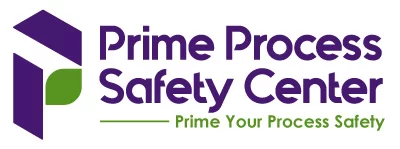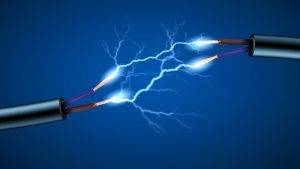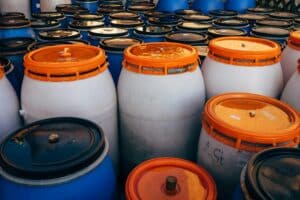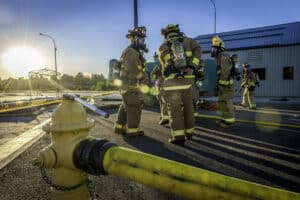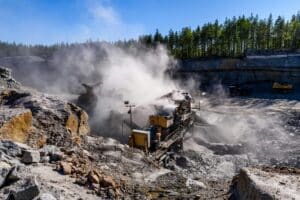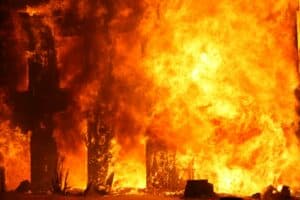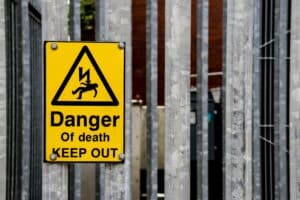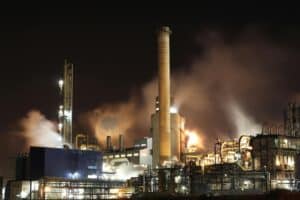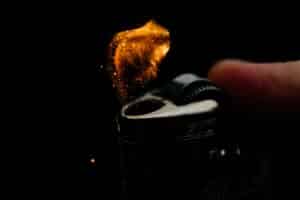What is Dust Hazard Analysis and the elements of conducting effective dust hazard analysis?
A Dust Hazard Analysis (DHA) systematically identifies and evaluates potential dust fire, flash fire (deflagration), and explosion hazards. It also recommends practical protective measures to prevent, mitigate, and manage these risks. Facilities that handle, process, or store combustible bulk solids must conduct a DHA to avoid catastrophic incidents, protect personnel, and prevent damage to property and supply chains. Each facility should assess combustible dust hazards based on its specific conditions. Using the findings from the DHA or a risk analysis, facilities can develop concrete safety measures and actions to reduce the likelihood and impact of dust explosions. A thorough DHA typically covers five critical elements: identifying combustible dust, assessing explosion scenarios, evaluating existing safety controls, developing mitigation strategies, and creating an action plan with proper documentation.
Why Should I Perform a Dust Hazard Analysis?
Performing a Dust Hazard Analysis (Dust Hazard Analysis) is crucial for identifying and mitigating the risks associated with combustible dust, which can pose significant fire and explosion hazards. This analysis is essential for ensuring compliance with safety regulations and standards (such as OSHA has implemented a Combustible Dust National Emphasis Program, CPL 03-00-008) and NFPA, particularly in industries handling materials that generate dust, such as food processing, pharmaceuticals, and woodworking. By conducting a Dust Hazard Analysis, facilities can evaluate the potential for dust explosions, assess the effectiveness of existing control measures, and implement additional safety precautions. This proactive approach not only enhances worker safety but also safeguards equipment and minimizes operational disruptions due to dust-related incidents, thereby contributing to the overall safety and efficiency of industrial operations.
Why Should I Choose Prime Process Safety Center for My Dust Hazard Analysis
- Expertise in Combustible Dust Hazards: Our team possesses specialized knowledge in identifying and managing risks associated with combustible dust, ensuring thorough and accurate analysis;
- Customized Solutions: We tailor our Dust Hazard Analysis to your specific industrial context, considering unique processes and materials used in your facility;
- Regulatory Compliance: Our approach aligns with relevant safety standards and regulations, helping you meet OSHA and NFPA requirements, thereby avoiding legal and financial repercussions;
- State-of-the-Art Techniques: We employ the latest methods and technologies in dust hazard assessment, providing you with the most current and effective safety strategies;
- Proactive Risk Management: Our analysis proactively identifies potential hazards, reducing the likelihood of dust-related incidents and enhancing overall workplace safety;
- Comprehensive Reporting: We provide detailed reports with actionable recommendations, enabling you to implement effective control measures and safety improvements;
- Training and Support: Beyond analysis, we offer training and support to your staff, fostering a safety-conscious culture and enhancing long-term safety compliance;
- Cost-Effective Strategies: We design our solutions to minimize costs while preventing expensive disruptions or damage from dust explosions.
- Industry Experience: We leverage our broad industry knowledge to identify and solve dust hazard challenges specific to your operations.
- Ongoing Support and Follow-Up: We provide continuous support and follow-up to help you implement and maintain effective safety measures.
- Own Laboratory: Prime Process Safety Center operates a state-of-the-art laboratory in Houston, Texas. Our team conducts accurate, reliable, and defensible testing that aligns with both industry and regulatory standards. Our lab is fully equipped to evaluate reaction mechanisms, processes, and materials.
When is a Dust Hazard Analysis required for my facility?
NFPA 652, “Standard on the Fundamentals of Combustible Dust,” requires all facilities handling or producing combustible dust to complete a Dust Hazard Analysis (DHA). NFPA standards are not enforceable by law. However, OSHA relies on them during enforcement under the Combustible Dust National Emphasis Program. Compliance with NFPA 652 may also be required by state and local fire codes. These codes are often based on NFPA 1, “Fire Code,” and/or the International Fire Code.
What is the focus of Dust Hazard Analysis and NFPA 652 Regulations?
A Dust Hazard Analysis requires that a hazard must be present – this is usually the presence of an explosible atmosphere and an effective source of ignition. Therefore, the key requirements for complying with NFPA 652 regulations revolve around the completion of a thorough Dust Hazard Analysis. Ultimately, we aim to provide a coherent focus for the control and mitigation strategies needed to manage combustible dust fire and explosion risks.
How to conduct a Dust Hazard Analysis?
Conducting a Dust Hazard Analysis requires systematically identifying and mitigating specific combustible dust hazards. For each hazard you identify, establish safe operating limits and document existing control measures. The primary goal of a Dust Hazard Analysis is to thoroughly uncover all potential hazards in your facility, especially those previously overlooked. You can achieve this by
- Identifying dust fire and explosion hazards;
- Assessing risk of dust fire and explosion by evaluating the ignition likelihood and consequence of dust fire and explosion.
- Recommending effective and practical hazard and risk control measures;
- Providing the supporting services to assist you in implementing changes and safety measures to prevent dust explosions and fires;
- Providing performance-based analyses in case the physical conditions prevent effective implementations of some safety measures/solutions;
- Tackling both dust fire and dust explosion hazards hand-in-hand.
What does the Dust Hazard Analysis involve?
A dust hazard analysis systematically identifies potential hazards and evaluates existing safeguards. Furthermore, it recommends additional safeguards or process improvements to reduce combustible dust explosion or fire risks. Although NFPA 652 does not require a specific format, common elements include material characterization, process characterization, evaluation of safeguards, mitigation recommendations, and verification. Overall, a dust hazard analysis helps protect people and facilities from combustible dust explosions. It also reduces legal liability.
Why is Dust Hazard Analysis important?
Dust Hazard Analysis is essential for ensuring workplace safety, complying with regulations, and preventing catastrophic events caused by combustible dust.
Which industries require a Dust Hazard Analysis?
Industries handling combustible dust, such as food processing, pharmaceuticals, chemicals, metalworking, and wood processing, require Dust Hazard Analysis.
What are the main components of a Dust Hazard Analysis?
The main components include identifying dust hazards, evaluating the severity of potential incidents, and implementing control measures to mitigate risks.
Who should conduct a Dust Hazard Analysis?
A Dust Hazard Analysis should be conducted by experienced professionals with knowledge in combustible dust hazards and industrial safety practices.
How often do you need to perform a Dust Hazard Analysis?
Conduct an initial Dust Hazard Analysis for any new process or facility, and review it at least every five years—or sooner if you make significant changes to processes, materials, or equipment.
What regulations govern Dust Hazard Analysis requirements?
In the U.S., OSHA and NFPA standards, particularly NFPA 652, govern Dust Hazard Analysis requirements. Other countries may have their own regulations.
What is NFPA 652?
NFPA 652 is the standard on the fundamentals of combustible dust, providing requirements for Dust Hazard Analysis and safety management practices.
What types of dust are considered combustible?
Combustible dust includes any fine material that can catch fire and explode when mixed with air, such as metal dust, wood dust, food particles, and synthetic materials.
What is a dust explosion pentagon?
The dust explosion pentagon consists of five elements: fuel (dust), ignition source, oxygen, dispersion, and confinement. Removing any one of these elements can prevent an explosion.
How is dust hazard severity determined?
Severity is determined by evaluating dust properties (e.g., Kst value), potential ignition sources, dust concentration, and the presence of confinement.
What is a Kst value?
The Kst value is a measure of the explosiveness of dust, indicating the maximum pressure rise rate during a dust explosion.
What are common ignition sources for dust explosions?
Common ignition sources include hot surfaces, electrical equipment, friction, static electricity, and open flames.
What are primary and secondary explosions?
A primary explosion starts where the dust is first released, and a secondary explosion follows when it stirs up accumulated dust in other parts of the facility.
How can dust accumulation be controlled?
Regular housekeeping, proper ventilation, and dust collection systems are critical for controlling dust accumulation.
What are some engineering controls for dust hazards?
Engineering controls include dust collection systems, explosion venting, suppression systems, and inerting.
What administrative controls can you implement?
Administrative controls involve training, safety procedures, regular inspections, and maintenance protocols.
What personal protective equipment (PPE) is necessary for working with combustible dust?
PPE may include dust masks, respirators, flame-resistant clothing, and anti-static footwear.
What is the role of training in Dust Hazard Analysis?
Training ensures that employees understand the hazards, proper handling procedures, and emergency response actions.
What should a Dust Hazard Analysis report include?
Dust Hazard Analysis report should include hazard identification, risk assessment, control measures, and recommendations for improvement.
How to prioritize Dust Hazard Analysis findings?
Prioritize findings by evaluating the severity and likelihood of potential incidents, addressing the most critical risks first.
Can Dust Hazard Analysis be integrated with other safety assessments?
Yes, Dust Hazard Analysis can be integrated with Process Hazard Analysis (PHA), Hazard and Operability Study (HAZOP), and other safety assessments.
What are some common challenges in conducting a Dust Hazard Analysis?
Challenges include identifying all potential ignition sources, characterizing dust properties, and ensuring effective implementation of control measures.
How can technology aid in Dust Hazard Analysis?
Technology, such as simulation software, dust concentration sensors, and explosion modeling, can enhance the accuracy and efficiency of Dust Hazard Analysis.
What are the consequences of not conducting a Dust Hazard Analysis?
Failing to conduct a Dust Hazard Analysis can result in increased risk of fires and explosions, regulatory fines, legal liabilities, and potential loss of life and property.

